Enhancing your vehicle with luxurious leather seats can be a game-changer, yet if the paint is spilt on them they may become damaged. If you have ever had the unfortunate experience of spilling paint on your leather seats, you know how difficult it can be to remove. In this article, we will discuss several methods for removing paint from leather seats. We will also provide tips for preventing future accidents from occurring.
Tricks for Removing Paint Stains from Leather
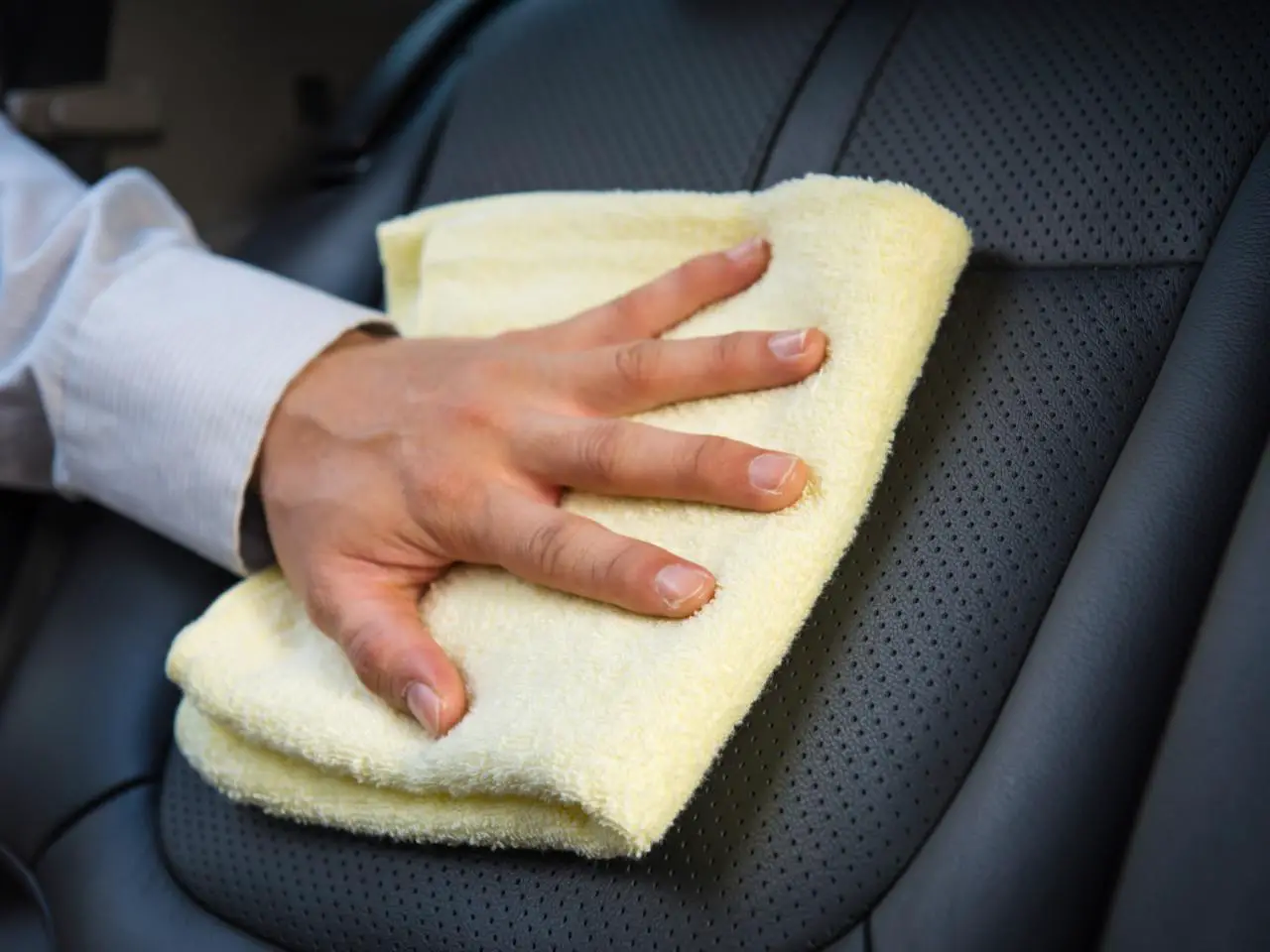
- Use a cotton ball or soft bristle brush to gently remove as much of the paint as possible. Do not rub too hard, as this can cause further damage to the leather surface.
- Apply a small amount of leather cleaner onto a clean cloth and gently wipe over the stained area. This will help loosen any dried-on paint particles that did not come off with the initial removal attempt.
- Once all the paint is gone, use a conditioner specifically designed for this purpose to keep the area hydrated and protected from further discoloration or damage.
- If you are still unable to remove all of the paint from your leather seats, consider taking them to a professional upholstery cleaner for a more thorough cleaning. [1]
How to Remove Paint from Leather with Cooking Oil
- To remove a stain, take a clean cloth and lightly apply some cooking oil to the affected area. Then rub it gently until the stain is gone.
- Let the cooking oil rest on your paint for several minutes before carefully wiping it off with a clean, dry cloth.
- Repeat steps 1-2 until all of the paint is removed from the leather surface.
- After all of the paint is removed, apply an appropriate leather conditioner to help keep the seats moisturized and protected from future stains and damage.
Oil Cleaning Recipe for Leather
- Mix equal parts white vinegar and warm water in a bowl or spray bottle.
- Apply the mixture to a clean cloth and gently rub it over the stained area.
- Allow the solution to sit for 30 minutes before wiping it away with a dry cloth.
- Rub a small amount of leather conditioner onto the affected area to help keep the leather moisturized and protected from future stains and damage.
Use Warm Water to Get the Paint off Leather
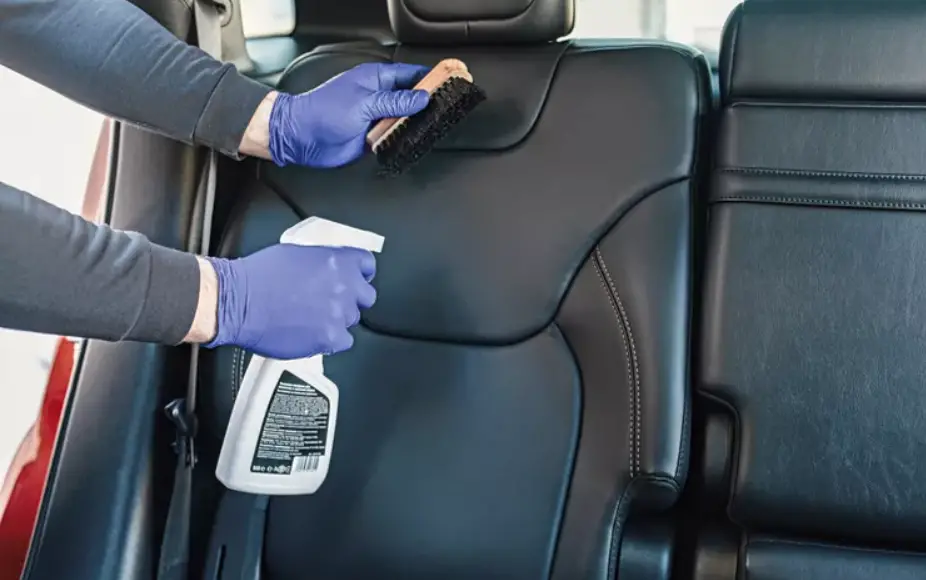
- Fill a bucket or sink with warm water and dip a clean cloth into it.
- Wring out the excess water before gently rubbing it over the stained area of the leather seat.
- Allow the wet cloth to sit for several minutes before wiping away any remaining paint particles with a dry cloth.
- Once all visible traces of paint are removed, apply an appropriate conditioner to help keep the leather protected and moisturized from future stains and damage. [2]
Warm Water Leather Cleaning Recipe
Soft cloth or sponge
Instructions
- Mix the water and liquid dish detergent in a bowl. Stir until combined.
- Dip the soft cloth or sponge into the mixture, then wring it out until damp but not dripping wet.
- Gently rub the leather surface with a damp cloth or sponge, using circular motions to clean dirt and debris off of the material.
- Wipe down the leather item with a dry cloth to remove any remaining suds and residue from the cleaning process.
- Air dry before wearing or storing items away for future use.
- Regularly clean leather items to help them maintain their longevity and quality.
- If the leather item is heavily soiled or stained, seek professional cleaning services for the best results.
Clean Leather with Soap and Water
Clean leather furniture is an important part of maintaining its look and longevity. The best way to clean leather furniture is to use a mixture of soap and water. This gentle cleaning solution will not only help remove dirt, dust, and other debris from the surface, but it will also help keep the natural oils in the leather moisturized.
Here’s how to do it
- Mix one-fourth cup of mild liquid dishwashing detergent with a gallon of lukewarm water in a bucket or bowl.
- Dip a soft cloth into the soapy solution and wring out any excess moisture before using it on the leather furniture. Take care not to soak the cloth too much as this could saturate the leather and leave behind a residue.
- Gently rub the cloth in circles over the surface of the furniture until it is clean.
- Wipe off any excess soap with a dampened cloth and then dry thoroughly with a soft, absorbent towel.
- Finish off by conditioning the leather with an appropriate product to help keep it hydrated and looking its best. [3]
Soap and Water Leather Cleaning Recipe
Now that you know the basics of leather cleaning, let’s move on to making a soap and water cleaner at home. This type of cleaning is suitable for most leather items, but it should not be used on suede or nubuck leather.
Soft cloths or sponges
Instructions
- Combine the laundry detergent and lukewarm water in a bowl. Stir until well blended.
- Dip your cloth or sponge into the mixture, then wring it out as much as possible so that it’s just damp and not soaking wet.
Leather Cleaning with a Soft Bristle Brush
When cleaning leather, it’s important to use the correct cleaning agents and tools to protect the material. A soft-bristle brush is an ideal tool for this task because it won’t damage or scratch the delicate leather surface. Start by vacuuming away any dirt and debris from the surface of the leather with a soft brush attachment. Then, mix a mild soap solution in warm water (around 1 teaspoon per cup) and dampen a sponge or cloth with it. Gently scrub any visible stains on the leather surface using circular motions, followed by dabbing at wet spots until they’re gone.
Soft Bristle Brush Cleaning Recipe
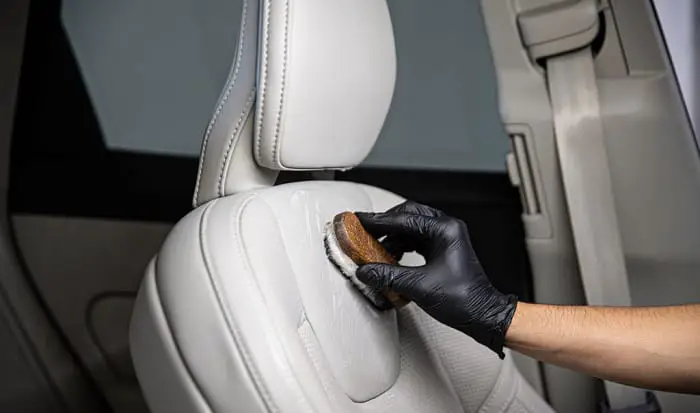
A soft-bristled brush or a toothbrush
Instructions
- Mix the baking soda and vinegar in a small bowl. Stir until combined.
- Pour the mixture onto the bristles of your soft bristle brush or toothbrush. Let it sit for about 5 minutes before scrubbing gently to dislodge dirt and grime from the bristles.
- Once you’ve finished scrubbing, rinse off the bristles with warm water to remove any residue from the cleaning solution.
- To finish up, mix the dish soap and warm water in a shallow bowl, and dip the brush into it. Swirl the bristles around for a few seconds to remove any remaining dirt and grime. Rinse with warm water to finish.
- Finally, take the brush outside or in a well-ventilated area and let it air dry before using again.
Rubbing Alcohol on Leather<
- Fill a bucket or sink with warm water and add a few drops of rubbing alcohol into it.
- Dip a clean cloth into the mixture and gently rub it over the stained area of the leather seat.
- Give the sudsy mixture a few moments to do its job before wiping away any leftover paint chips with a dry cloth material.
- Once all visible traces of coloring are banished, apply a suitable conditioner that will help protect and hydrate your leather from future discolorations or damaging elements.
- To further secure protection against potential staining and harm in the days ahead, you can vacuum up any remaining debris on the surface of your leather seating before conditioning it for added peace of mind! [4]
Rubbing Alcohol Cleaning Recipe<
Instructions
- In a spray bottle, mix two parts rubbing alcohol to one part white vinegar.
- Fill the rest of the bottle with distilled water and add essential oils or fragrances if desired. Shake gently to mix ingredients together.
- Spray onto surfaces that need cleaned and wipe down with a cloth or paper towel until dirt and grime is removed. Note: avoid using this solution on delicate fabrics and surfaces such as wood, marble, leather, etc.
- For added protection from germs and viruses, spray a second time and allow to air dry.
- Disinfect surfaces by letting the solution sit for at least one minute before wiping clean.
- When you’re finished, store it in a cool, dry place away from direct sunlight for up to six months to keep it effective.
Getting Paint off Leather with Fingernail Polish
- Pour a small amount of fingernail polish remover onto a clean cloth and gently wipe the stained area of the leather seat.
- Give the leather a few minutes to absorb the paint remover before you wipe away any remaining particles with a clean, dry cloth.
- To ensure future protection against staining and deterioration, apply an appropriate conditioner on top of all visible traces of paint that have been eliminated from surface area.
- As an added measure, you can also use a vacuum to pick up any remaining debris on the surface of your leather seating before applying conditioner for extra protection against future stains and damage.
Fingernail Polish Cleaning Recipe
Soft cloths
Instructions
- Dip cotton balls or pads into fingernail polish remover and apply gently to the stained area of the leather.
- Allow the paint to remain on the surface for several minutes before delicately wiping away any leftover particles with a soft, dry cloth.
- Carefully and gradually move the cloth over the stain until it completely vanishes, avoiding any excessive scrubbing which may harm the leather material.
- Once all paint remnants have been removed, use a suitable conditioner to protect and add moisture to your leather, preventing further spots or ruin in the future!
- To give your leather seating extra protection from future staining and damage, use a vacuum to lift up any remaining particles on the surface before applying the conditioner.
- For efficient results for one full year, store any unused nail polish remover in a dark area with no direct sunlight exposure!
Cleaning Leather with Petroleum Jelly
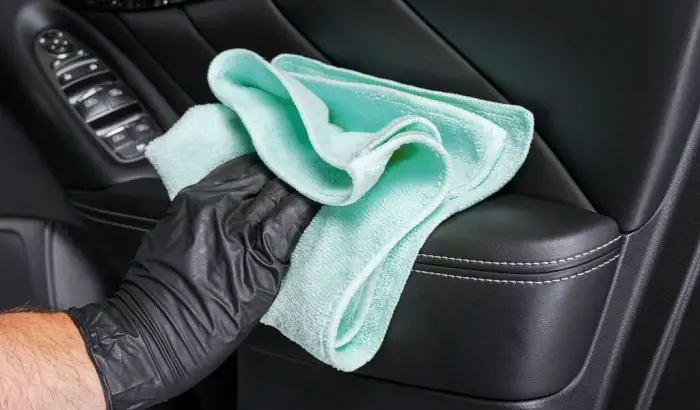
Cleaning leather with petroleum jelly is a great way to remove dirt and grime from the surface of your leather items. Petroleum jelly can be used on almost any type of leather, including suede, nubuck, finished, and unfinished leather. It’s important to note that this cleaning method should be used sparingly as it can darken lighter-colored leather if applied too heavily. [5]
To clean your leather item with petroleum jelly:
- Start by wiping off any excess dirt or dust from the surface of the leather using a damp cloth. Be sure to avoid saturating the material with water as this could damage it.
- Next, apply a thin layer of petroleum jelly over the entire area of leather that needs to be cleaned. Use a soft, lint-free cloth to gently rub the jelly in an even layer over the material.
- Allow the petroleum jelly to sit on the surface of the leather for about 30 minutes. This will allow it time to penetrate any dirt or grime and help lift stains from the material’s surface.
- After 30 minutes have passed, use a dry cloth to buff away any excess petroleum jelly from the leather item. Be sure not to scrub too vigorously as this could damage or scratch the delicate material.
- Finish by wiping down your leather item with a damp cloth and allowing it to air dry completely before using it again.
Petroleum Jelly Cleaning Recipe
Instructions
- In a large bowl, mix together the petroleum jelly and vinegar until they are fully combined.
- Add the dish soap and mix until everything is fully blended.
- Slowly add in the warm water and stir until all of the ingredients are evenly distributed in the mixture.
- Transfer your cleaning solution to an applicator bottle for easy application or use directly with a damp cloth or scrub brush on items that need extra attention, such as small crevices or corners.
- Let it sit for a few minutes before wiping away with a damp cloth.
- Rinse the surface thoroughly with warm water to remove any residual petroleum jelly and soap.
- Enjoy your shining clean item!
Get Paint from Leather with a Blunt Knife or Scraper
If you are dealing with a stubborn stain on leather, you may need to use a blunt knife or scraper to get the paint off. This should only be done if other methods such as rubbing alcohol and vinegar have failed. Make sure you don’t scratch or damage the leather surface, as this will make it even harder to remove the paint.
First, rub the dull edge of the knife against the affected area in short strokes and see if any paint comes off. If not, apply a small amount of force but never press too hard, as this could cause irreparable damage. When scraping gently with a knife or other tools like a putty knife or razor blade, keep your strokes parallel so that they do not damage the leather’s grains. [6]
Dull Knife or Scraper Cleaning Recipe for Leather
Instructions
- Using a dull knife or scraper, carefully scrape away any remaining paint from the surface of your leather seating.
- Take care not to scrub too hard and damage the leather while you are removing the paint.
- Once all visible traces of paint are removed, apply an appropriate conditioner to help keep the leather protected and moisturized from future stains and damage.
- As an added measure, you can also use a vacuum to pick up any remaining debris on the surface of your leather seating before applying conditioner for extra protection against future stains and damage.
- Store unused dull knives or scrapers in a cool, dry place away from direct sunlight for up to one year to keep them effective.
- Make sure to clean and oil the blades of your dull knife or scraper regularly for best results.
- Avoid using sharp blades as they may cause damage when used on leather surfaces.
- When not in use, always store your tools properly and securely away from children or pets.
Use a Clean Wet Rag
When you decide to clean your floor with a wet rag, you must use one that is clean and free of lint. This will prevent the dirt and dust from sticking to the rag and transferring back onto your floors. To ensure thorough cleaning, you should rinse out the rag frequently in warm soapy water while scrubbing. When finished, hang up the wet rag over a clothesline or towel rack to dry completely before storing it away for future use. Cleaning your floor with a damp cloth can help maintain its shine and keep it looking like new for years to come.
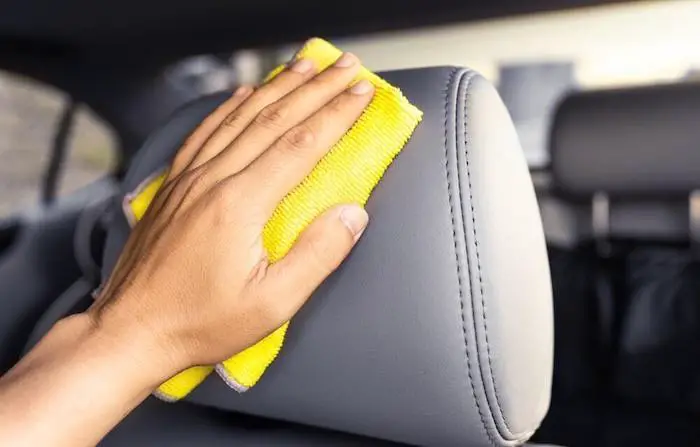
Rag or Towel Cleaning Recipe
- For this recipe, you will need an old rag or a clean towel.
- Fill a bucket with two cups of warm water and two tablespoons of mild soap.
- Dip the rag or towel into the solution, making sure it is saturated but not dripping wet.
- Begin scrubbing away dirt and grime from your surface using circular motions until the area is cleaned to your satisfaction.
- Rinse off any remaining soap residue using a damp cloth and then dry with a soft cloth or air-dry by leaving it in direct sunlight for about an hour.
- Finally, be sure to hang up your rag or towel after every use so that it can dry completely before being used again.
How Does Leather Cleaning Work?
Leather cleaning usually involves a combination of careful vacuuming, brushing, and spot-cleaning. Vacuuming removes dirt and other particles from the surface of the leather. Brushing helps to remove any stubborn residue or discoloration that may be on the leather. Spot-cleaning is used to treat small stains and spills that have already occurred.
FAQ
How do you remove dried paint from leather?
Removing dried paint from leather can be tricky, but it doesn’t have to be impossible. Here are some tips for removing dried paint from leather:
- Put on protective gloves and safety goggles before beginning.
- Gently scrape away as much of the dried paint as possible with a plastic putty knife or razor blade. Be careful not to cut or damage the leather in the process.
- Create a paste out of equal parts white vinegar and baking soda, adding enough water to make it spreadable. Rub this mixture into the painted area and let sit for 10-15 minutes.
- Wipe off with a damp cloth, then dry with a soft towel or cloth.
Does paint remover damage leather?
Paint remover can cause damage to leather if it is used incorrectly. Paint remover should only be used with extreme caution and should never be applied directly onto the leather surface.
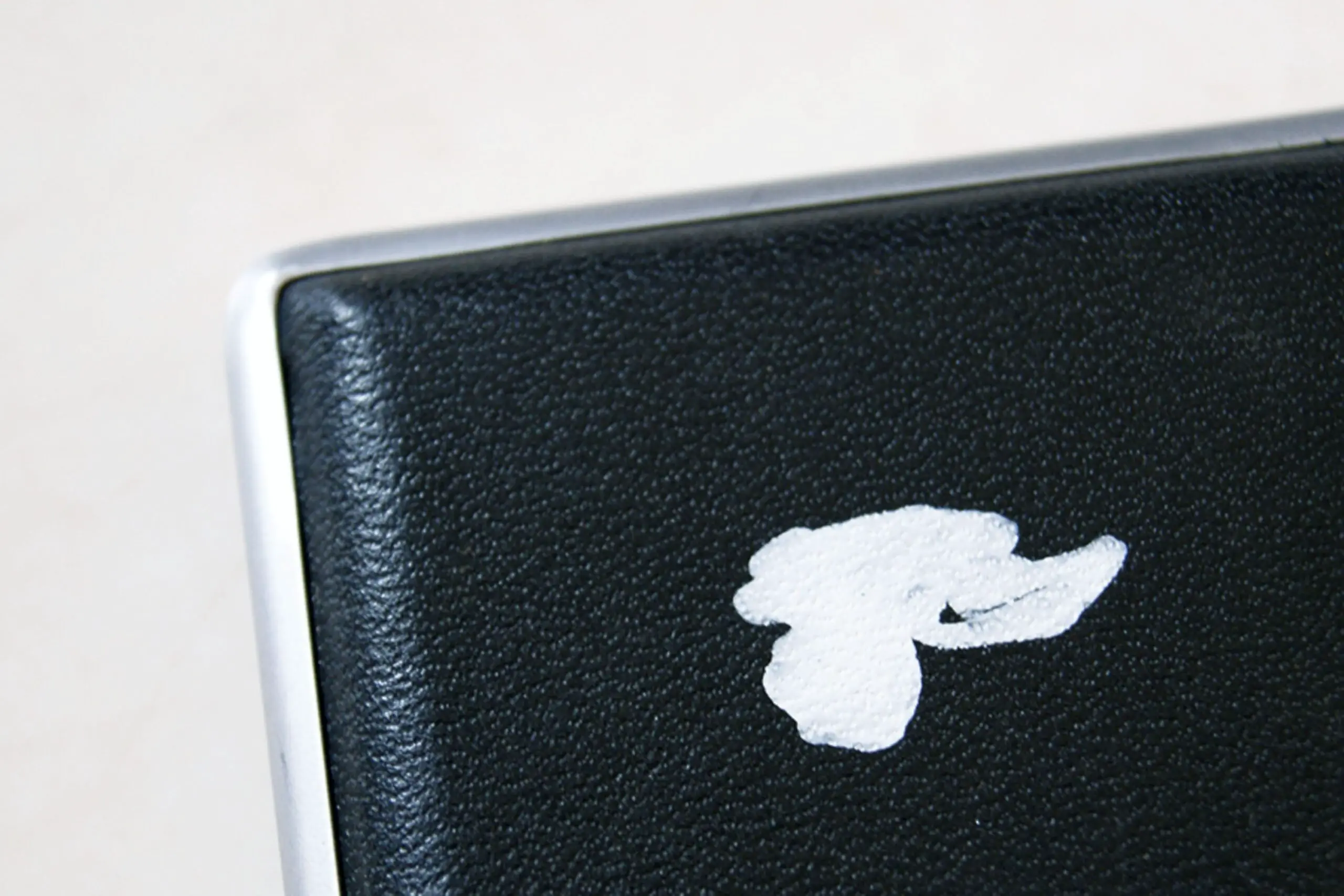
Instead, use a dull knife or scraper to carefully scrape away any remaining paint from the surface of your leather seating, taking care not to scrub too hard and damage the leather. Once all visible traces of paint are removed, apply an appropriate conditioner to help keep the leather protected and moisturized from future stains and damage.
Does rubbing alcohol destroy leather?
Rubbing alcohol can damage leather if it is not used properly. When using rubbing alcohol to clean a leather surface, be sure to use only small amounts and apply it with a soft cloth or sponge in circular motions until the desired effect is achieved. Do not scrub too hard as this could cause discoloration or even permanent damage. After cleaning, remember to always condition your leather with an appropriate conditioner to help keep it looking good for longer periods by protecting it against future stains and damage.
Can I use vinegar on leather?
Vinegar should not be used to clean leather as it can cause discoloration and damage the material. If you need to clean a leather surface, use an appropriate leather cleaner and conditioner designed specifically for that purpose. Leather cleaners and conditioners will help remove dirt, oil, grease, and other contaminants while restoring moisture and natural oils that are lost over time due to wear and tear. They also protect the leather from future stains and damage by conditioning it with protective agents. Be sure to follow all instructions on the label of your product carefully to ensure safe use.
Can you use baking soda on leather?
Baking soda can be used to clean leather as a mild abrasive. However, it is important to note that baking soda should only be used in small amounts and with extreme caution. Apply the baking soda with a soft cloth or sponge in circular motions until the desired effect is achieved, taking care not to scrub too hard and damage the leather. After cleaning, always condition your leather with an appropriate conditioner to help keep it looking good for longer periods by protecting it against future stains and damage.
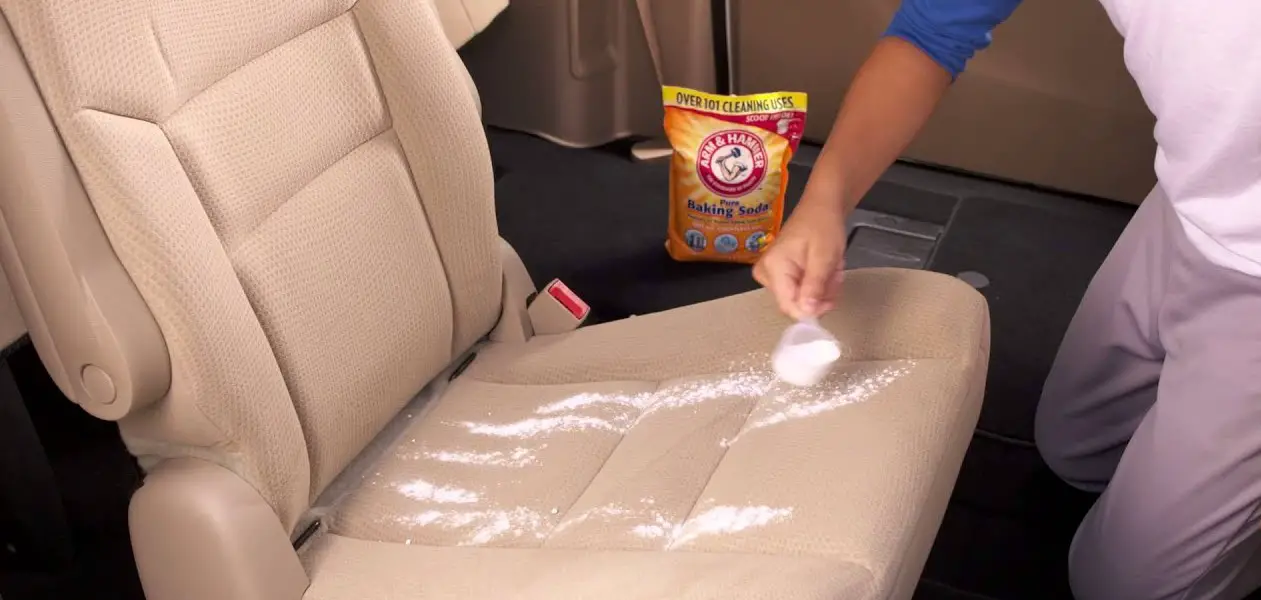
What does white vinegar do to leather?
White vinegar can cause discoloration and damage to leather if it is not used properly. When using white vinegar on a leather surface, be sure to use only small amounts and apply it with a soft cloth or sponge in circular motions until the desired effect is achieved. Do not scrub too hard as this could cause discoloration or even permanent damage. After cleaning, remember to always condition your leather with an appropriate conditioner to help keep it looking good for longer periods by protecting it against future stains and damage.
Useful Video: How to remove paint from leather seat
Conclusion
As you have seen, removing paint from leather seats isn’t overly difficult if you use the right tools and take the proper precautions. When it comes to your car, paint and DIY are a very delicate balance; but when done correctly, you can save yourself lots of money in the long run. Remember that patience and attention to detail is key – simply follow the steps outlined above and clean away at the stain until no trace of paint remains. Always remember to test any cleaner or chemical on a small area before doing a whole seat – if anything is too abrasive or doesn’t play well with your leather, stop immediately and retry something else. Good luck, and thanks for taking this journey with us – we hope these tips were helpful for you as you tackle your leather paint removal challenges!
References
- https://www.leatherneo.com/blogs/news-and-stories/5-effective-ways-to-remove-paint-from-leather
- https://leatherings.com/how-to-remove-paint-from-leather-jacket/
- https://favoredleather.com/is-soap-and-water-bad-for-leather/
- https://www.rubbing-alcohol.com/using-rubbing-alcohol-to-clean-leather/
- https://leatherinformer.com/is-petroleum-jelly-good-for-leather/
- https://www.leatherskill.com/how-to-remove-paint-from-leather/

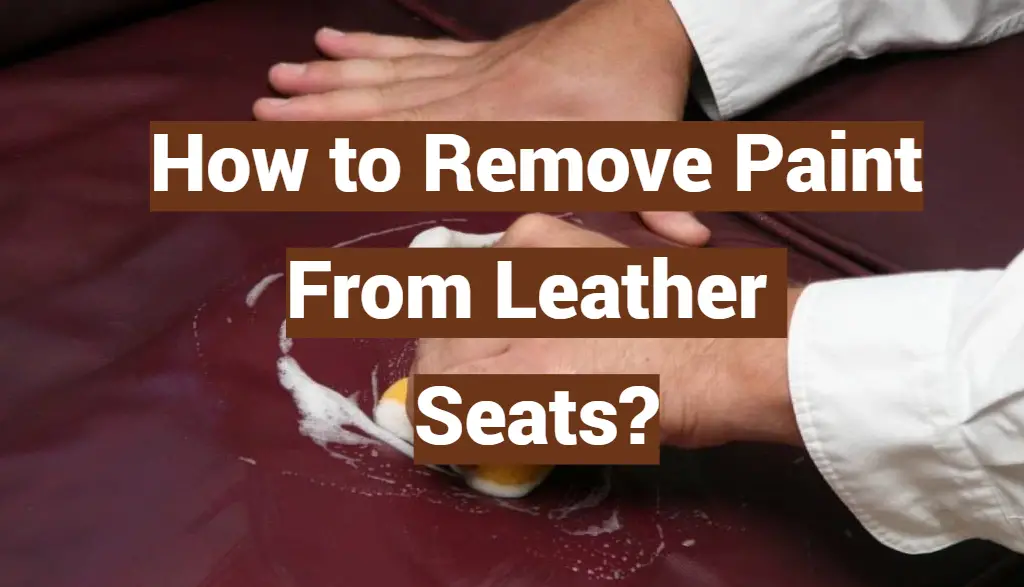


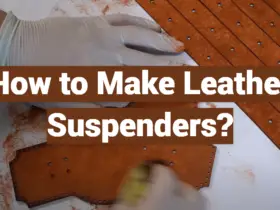


Leave a Reply